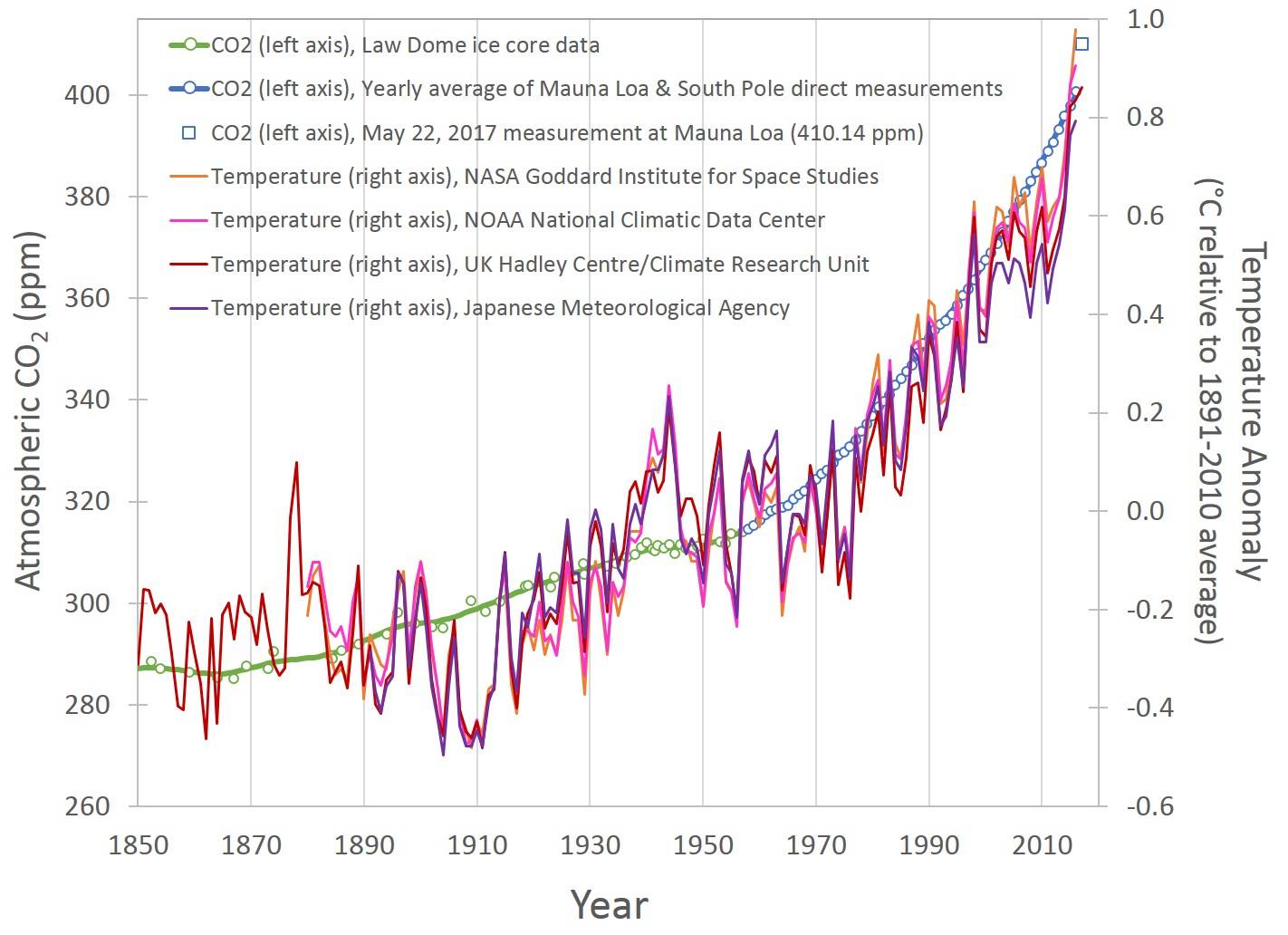2aguy
Diamond Member
- Jul 19, 2014
- 112,367
- 52,615
- 2,290
An update on the 2009 report on the locations of temperature measuring stations in the U.S.........where you have temperature readers located next to heat vents.....and other silly things that make the data worthless...
The article mentioning the report is from Breitbart, and I also linked to the report they linked to...........

 www.breitbart.com
www.breitbart.com
A study that investigated the placement of National Oceanic and Atmospheric Administration (NOAA) temperature stations foundthat 96 percent of the facilities used to measure heat failed to meet the agencies own “uncorrupted placement” standards.
Research for the study shows that the 96 percent corruption is because thestations’ measurements are tainted by the effects of urbanization – or heat produced because of their close proximity to asphalt, machinery, and other heat-producing, heat-trapping, or heat-accentuating objects.
The Heartland Institute compiled the report using satellite and in-person surveys of NOAA weather stations that contribute to the “official” land temperatures in the United States.
“With a 96 percent warm-bias in U.S. temperature measurements, it is impossible to use any statistical methods to derive an accurate climate trend for the U.S.” Heartland Institute Senior Fellow Anthony Watts, who directed the study, said is the study announcement distributed to the press. “Data from the stations that have not been corrupted by faulty placement show a rate of warming in the United States reduced by almost half compared to all stations.”
===========
From the actual report...
2022 SURFACE STATIONS SURVEY: EXAMPLES OF SITING ISSUES, GOOD AND BAD
This section presents photographic examples of USHCN and GHCN station siting. The majority of stations are not in compliance with NWS publication 10-1302, but examples of those in compliance are also given. Station locations, observed issues, and explanations are given in the image captions.


MMTS placement in COOP observer’s yard next to an ODOT maintenance facility in Basque, OR. Note the very large asphalt parking lot in the aerial photo and the yellow marker indicating the MMTS placement. Basque is an isolated small town, with the next town 30 miles away. It would be categorized as exceptionally rural, yet the GHCN thermometer is placed directly next to the largest heat sink. Source: Anthony Watts, Google Earth.
The article mentioning the report is from Breitbart, and I also linked to the report they linked to...........

Garbage In, Garbage Out: 96% of NOAA Temperature Stations Fail 'Uncorrupted Placement' Standards
A study found that 96% of heat measurement around the U.S. fail to meet NOAA's own “uncorrupted placement” standards.
A study that investigated the placement of National Oceanic and Atmospheric Administration (NOAA) temperature stations foundthat 96 percent of the facilities used to measure heat failed to meet the agencies own “uncorrupted placement” standards.
Research for the study shows that the 96 percent corruption is because thestations’ measurements are tainted by the effects of urbanization – or heat produced because of their close proximity to asphalt, machinery, and other heat-producing, heat-trapping, or heat-accentuating objects.
The Heartland Institute compiled the report using satellite and in-person surveys of NOAA weather stations that contribute to the “official” land temperatures in the United States.
“With a 96 percent warm-bias in U.S. temperature measurements, it is impossible to use any statistical methods to derive an accurate climate trend for the U.S.” Heartland Institute Senior Fellow Anthony Watts, who directed the study, said is the study announcement distributed to the press. “Data from the stations that have not been corrupted by faulty placement show a rate of warming in the United States reduced by almost half compared to all stations.”
===========
From the actual report...
2022 SURFACE STATIONS SURVEY: EXAMPLES OF SITING ISSUES, GOOD AND BAD
This section presents photographic examples of USHCN and GHCN station siting. The majority of stations are not in compliance with NWS publication 10-1302, but examples of those in compliance are also given. Station locations, observed issues, and explanations are given in the image captions.
MMTS placement in COOP observer’s yard next to an ODOT maintenance facility in Basque, OR. Note the very large asphalt parking lot in the aerial photo and the yellow marker indicating the MMTS placement. Basque is an isolated small town, with the next town 30 miles away. It would be categorized as exceptionally rural, yet the GHCN thermometer is placed directly next to the largest heat sink. Source: Anthony Watts, Google Earth.
Last edited:


